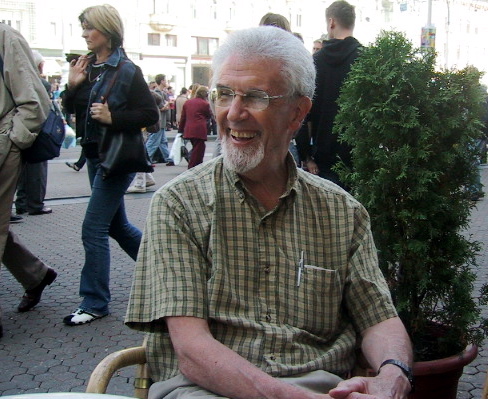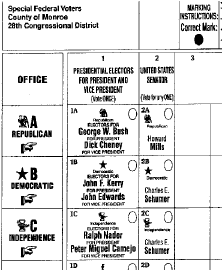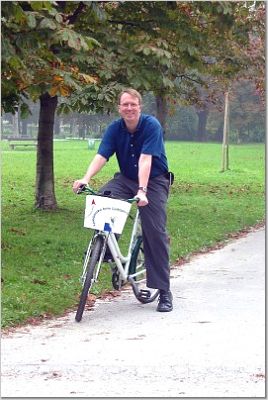Almost every travel book you read, especially those of the “traveler” rather than “tourist” bent, will have a section on packing. And the collective message of those sections is “pack light.”
Chapter 4 of Rick Steeve’s Europe Through the Back Door is titled, for example, “Pack Light Pack Light Pack Light” and begins:
The importance of packing light cannot be overemphasized, but, for your own good, I’ll try. You’ll never meet a traveler who, after five trips, brags “Every year I pack heavier.” The measure of a good traveler is how light she travels. You can’t travel heavy, happy and cheap. Pick two.
As detailed in this space before, this was my year to experiment with “Extreme Packing” — that is, packing light, packing light, packing light.
And after three trips — San Francisco in the spring, Boston in the summer, and Europe in the fall — I am ever more the “pack light” zealot.
In my kit for the 10-day European trip were:
- Two changes of clothes (two shirts, two pairs of socks, two pairs of underwear). Plus the set of clothes on my back.
- One pair of North Face Journey Pants. Light, warm, and impervious to dirt. Zipped pocket on front.
- One REI-brand Polarfleece jacket with zip-pockets.
- One black T-shirt, one pair of light pyjama bottoms.
- Toothbrush, toothpaste, electric shaver, small bottle of shampoo, small travel deodorant. All stored in Ziploc bag.
- iPod, earphones and charger.
- Cell phone and charger.
- Canon PowerShot S100 digital camera and charger.
- European travel plug (shaver, iPod and cell phone were all dual-voltage, so only needed a plug converter).
- One Moleskin notebook, two ballpoint pens.
- Printout of travel plans on one sheet of paper.
- Rough Guide to Croatia and Paul Theroux paperback.
- Neck wallet for passport, credit cards, plane tickets, etc.
I packed all of this in Kelty Redwing 2500 backpack.
If I was packing again, I would have left the Rough Guide (it was heavy, and mostly useless because it didn’t cover the areas of Croatia we were visting at all) and the paperback (never opened it). I might also leave the iPod at home, although it was nice to have a couple of times on long air or train travel legs.
Otherwise, I had what felt like the perfect amount of stuff on my back.
Dad and I washed out our clothes in hotel sinks three times: I had lightweight clothing that always dried overnight (indeed my cheap Zellers socks dried better than Dad’s high-tech Tilley travel socks). I did end up wearing the same shirt a couple of times, which didn’t seem to be a problem (for me, or for others).
Truth be told, I can’t imagine what else I would bring with me. And watching my fellow travelers check their giant rolling suitcases in at the airport, both Dad and I wondered what on earth they could be carrying in them: television sets? hair dryers? curling irons? Unless you’re moving to India for six months, or need to dress in formal business attire, I can’t see how filling up more than the roughly 2000 cubic inches that I did will make your trip any better.
The advantages of packing light are numerous:
- You can carry your bag right on the plane and train with you: no lost luggage, no wait at the airport (you clear customs first).
- You don’t have to worry about finding a place to store luggage when you arrive early or leave late from a city (I did end up storing my pack several times, because Dad stored his luggage, but I would have been comfortable with it on my back).
- Everything is with you, all the time. You can always brush your teeth, jot down some notes, make a phone call, change a shirt, without worrying whether you have the right suitcase with you at the time.
- Trip psychology is improved: when you’re packing light, you feel more mobile, more nimble, more flexible, more spontaneous.
When Catherine and Oliver and I went to Spain last year, we packed light. But there’s only so much you can pare down when you travel with a young child: car seat, strollers, backup diaper and outfit supply, etc. make for quite a pile of stuff to drag around. We had it down to an art (car seat on Catherine’s back, Oliver in stroller, small pack in back of stroller, large pack on my back, day pack in my hands), and we were pretty nimble, all things considered. But we still felt like a small army moving around. Next time we go, Oliver will be toilet trained (touch wood) and we might even be able to leave the car seat and stoller behind. Three small packs, and we’ll be ready to fly.
The problem with trying to pack light is that what “light” works out to in the pleasure of your bedroom is drastically different than what “light” will feel like out on the moors. Slinging a backpack on and walking around the house is not a reasonable test for determining whether there’s too much in the pack or not. Better to take a 2 mile hike. Or a 5 mile hike. In the sun.
The best trick I’ve found is to pack so that your backpack seems absurdly empty — say half to 2/3 empty in the large main compartment. If you can get things down that light, then the inevitable expansion that will occur — dirty clothes larger than clean, neat clothes, souvenirs gathers en route, etc. — will have lots of room to grow into.
The other technique is to pack what you think you need, then remove half of it. If you get things down to where you’re thinking “there’s no way in hell I can travel with that little” then you’re getting close.
When talking about Extreme Packing in San Francisco this spring, Bart, one of “the Mozilla guys,” claimed to have travelled to Belgium with only a toothbrush and a paperback book. I’m not there yet, but at least I have something to aspire to.
Need inspiration? Here’s a photo of Kevin Kelly’s backpack, about which he says “In the 1970s my possessions fit into this backpack and included a change of clothes, a toothbrush, mosquito netting and 300 rolls of film.”
Pack on.



